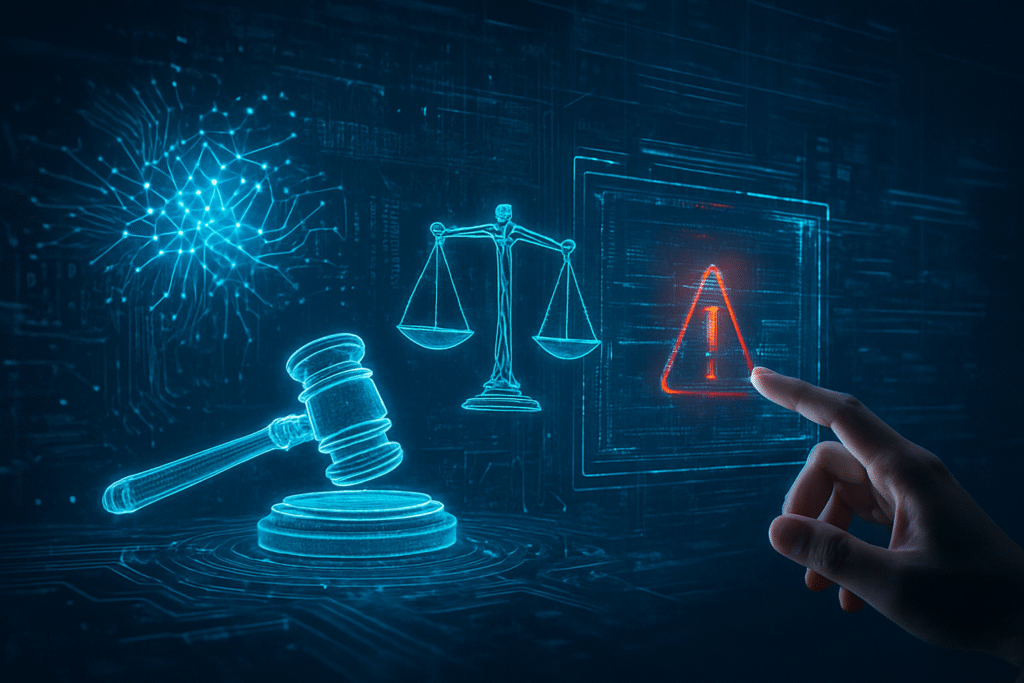
In a development that has sent ripples through the legal community, two federal judges in the United States have openly admitted that their staff utilized artificial intelligence (AI) tools to draft court rulings, leading to significant errors and inaccuracies. These admissions, particularly from a U.S. District Judge in Mississippi and another in New Jersey, underscore the nascent but growing challenges of integrating advanced AI into critical judicial processes. The incidents raise profound questions about accuracy, accountability, and the indispensable role of human oversight in the administration of justice, prompting immediate calls for stricter guidelines and robust review mechanisms.
The revelations highlight a critical juncture for the U.S. legal system as it grapples with the promise and peril of AI. While AI offers potential for efficiency gains in legal research and document drafting, these high-profile errors serve as a stark reminder of the technology's current limitations and the severe consequences of unchecked reliance. The judges' candid admissions have ignited a broader conversation about the ethical and practical frameworks necessary to ensure that technological advancements enhance, rather than compromise, the integrity of judicial decisions.
Unpacking the AI-Induced Judicial Blunders
The specific instances of AI-induced errors provide a sobering look at the challenges of integrating generative AI into legal workflows. U.S. District Judge Henry T. Wingate, presiding over the Southern District of Mississippi, publicly acknowledged that his staff used generative AI to draft a temporary restraining order on July 20, 2025. This order, intended to pause a state law prohibiting diversity, equity, and inclusion (DEI) programs, was subsequently found to be "riddled with mistakes" by attorneys from the Mississippi Attorney General's Office. The errors were extensive, including the listing of non-parties as plaintiffs, incorrect quotes from state law, factually inaccurate statements, references to individuals and declarations not present in the record, and citations to nonexistent or miscited cases. Following discovery, Judge Wingate replaced the erroneous order and implemented new protocols, mandating a second independent review for all draft opinions and requiring physical copies of all cited cases to be attached.
Similarly, U.S. District Judge Julien Xavier Neals of the District of New Jersey admitted that his staff's use of generative AI resulted in factually inaccurate court orders. In a biopharma securities case, Judge Neals withdrew his denial of a motion to dismiss after lawyers identified "pervasive and material inaccuracies." These errors included attributing inaccurate quotes to defendants, relying on quotes from decisions that did not contain them, and misstating the outcomes of cited cases (e.g., reporting motions to dismiss as denied when they were granted). It was later reported that a temporary assistant utilized an AI platform for research and drafting, leading to the inadvertent issuance of an unreviewed, AI-generated opinion. In response, Judge Neals instituted a written policy prohibiting all law clerks and interns from using AI for drafting opinions or orders and established a multi-level opinion review process. These incidents underscore the critical difference between AI as a research aid and AI as an autonomous drafter, highlighting the technology's current inability to discern factual accuracy and contextual relevance without robust human oversight.
Repercussions for the AI and Legal Tech Landscape
These high-profile admissions carry significant implications for AI companies, tech giants, and startups operating in the legal technology sector. Companies developing generative AI tools for legal applications, such as Thomson Reuters (NYSE: TRI), LexisNexis (part of RELX PLC (NYSE: RELX)), and a host of legal tech startups, now face increased scrutiny regarding the reliability and accuracy of their offerings. While these companies often market AI as a tool to enhance efficiency and assist legal professionals, these incidents emphasize the need for robust validation, error-checking mechanisms, and clear disclaimers regarding the autonomous drafting capabilities of their platforms.
The competitive landscape may see a shift towards solutions that prioritize accuracy and verifiable outputs over sheer speed. Companies that can demonstrate superior reliability and integrate effective human-in-the-loop validation processes will likely gain a strategic advantage. This development could also spur innovation in AI auditing and explainable AI (XAI) within the legal domain, as the demand for transparency and accountability in AI-generated legal content intensifies. Startups focusing on AI-powered fact-checking, citation validation, and legal reasoning analysis could see a surge in interest, potentially disrupting existing product offerings that solely focus on document generation or basic research. The market will likely demand more sophisticated AI tools that act as intelligent assistants rather than autonomous decision-makers, emphasizing augmentation rather than full automation in critical legal tasks.
Broader Significance for the Legal System and AI Ethics
The admission of AI-induced errors by federal judges represents a critical moment in the broader integration of AI into professional domains, particularly those with high stakes like the legal system. These incidents underscore fundamental concerns about accuracy, accountability, and the ethical challenges of delegating judicial tasks to algorithms. The legal system relies on precedent, precise factual representation, and the nuanced interpretation of law—areas where current generative AI, despite its impressive linguistic capabilities, can still falter, leading to "hallucinations" or fabricated information.
This development fits into a broader trend of examining AI's limitations and biases, drawing comparisons to earlier instances where AI systems exhibited racial bias in loan applications or gender bias in hiring algorithms. The difference here is the direct impact on justice and due process. The incidents highlight the urgent need for comprehensive guidelines and regulations for AI use in judicial processes, emphasizing the critical role of human review and ultimate responsibility. Without clear oversight, the potential for systemic errors could erode public trust in the judiciary, raising questions about the very foundation of legal fairness and equity. The legal community must now proactively address how to leverage AI's benefits while mitigating its risks, ensuring that technology serves justice, rather than undermining it.
The Path Forward: Regulation, Refinement, and Responsibility
Looking ahead, the admissions by Judges Wingate and Neals are likely to catalyze significant developments in how AI is integrated into the legal system. In the near term, we can expect a surge in calls for federal and state judicial conferences to establish clear, enforceable policies regarding the use of AI by court staff. These policies will likely mandate human review protocols, prohibit the unsupervised drafting of critical legal documents by AI, and require comprehensive training for legal professionals on the capabilities and limitations of AI tools. Experts predict a push for standardized AI literacy programs within law schools and ongoing legal education.
Long-term developments may include the emergence of specialized AI tools designed specifically for legal verification and fact-checking, rather than just content generation. These tools could incorporate advanced natural language processing to cross-reference legal texts with case databases, identify logical inconsistencies, and flag potential "hallucinations." Challenges that need to be addressed include establishing clear lines of accountability when AI errors occur, developing robust auditing mechanisms for AI-assisted judgments, and fostering a culture within the legal profession that embraces AI as an assistant rather than a replacement for human judgment. What experts predict next is a dual approach: stricter regulation coupled with continuous innovation in AI safety and reliability, aiming for a future where AI truly augments judicial efficiency without compromising the sanctity of justice.
Conclusion: A Wake-Up Call for AI in Justice
The admissions of AI-induced errors by federal judges serve as a significant wake-up call for the legal system and the broader AI community. These incidents underscore the critical importance of human oversight, rigorous verification, and accountability in the integration of artificial intelligence into high-stakes professional environments. While AI offers transformative potential for enhancing efficiency in legal research and drafting, the current reality demonstrates that uncritical reliance can lead to profound inaccuracies with serious implications for justice.
This development marks a pivotal moment in the history of AI's application, highlighting the urgent need for thoughtful policy, ethical guidelines, and robust technological safeguards. The legal profession must now navigate a complex path, embracing AI's benefits while meticulously mitigating its inherent risks. In the coming weeks and months, all eyes will be on judicial bodies and legal tech developers to see how they respond to these challenges—whether through new regulations, enhanced AI tools, or a renewed emphasis on the irreplaceable role of human intellect and ethical judgment in the pursuit of justice.
This content is intended for informational purposes only and represents analysis of current AI developments.
TokenRing AI delivers enterprise-grade solutions for multi-agent AI workflow orchestration, AI-powered development tools, and seamless remote collaboration platforms.
For more information, visit https://www.tokenring.ai/.





